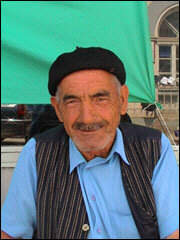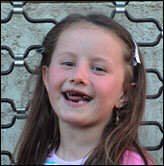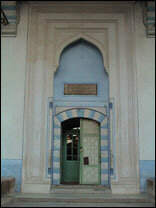 POPULATION RELIGION POPULATION RELIGION |

Kosovar market trader
Kosovar Albanian's represent 90% of the population of Kosovo. The structure of the Kosovar population has continually changed over different historic periods. Demographic data on this area show that Kosovo is a very specific region compared with other parts of ex-Yugoslavia. One of the main traits of this pattern was the dramatic increase in the Kosovar Albanian population, which had the highest population growth rate of any of the ethnicity's throughout all of the former Yugoslav republics and even within Europe. During the last 90 years the population of Kosovo has increased 6.8 times, in comparison with its neighbor Serbia whose population growth for the same period was (3.0). The demographics that give Albanians the upper hand resulted from an unusually high birth rate and increase in natural growth, with a prevalent male gender and a very young population (67%). The average annual increase was 2,7%, while the mortality rate registered at 8,0%. In 1900 Kosovo had 378.000 inhabitants, while by 2001 this figure had increased to 2.1 million.

Young Kosovar girl
| Kosovar Albanians have a distinct migration pattern. The Kosovar Diaspora is located world wide but most Kosovar immigrants have chosen to settle in Switzerland, Germany, Turkey or in the United States of America. The official statistics show that over 4 million Albanians from the Balkans region have migrated to Turkey over the years. The annual cumulative increase of the Kosovar population is 50.000, meaning that every ten years sees an increase of 500.000. Population growth patterns in Kosovo are very similar to those in Montenegro. Such an increase in population could be attributed to regional rural to urban migration over recent years.

Entry to a mosque
The population of Kosovo largely belongs to the Islam religion, approximately 98% are Sunni Muslims, while 2% of the population are Catholic, throughout the day it is typical to hear "Hoxha" or religious singing that echoes around Prishtina and the other urban centers.
 POPULATION DISTRIBUTION POPULATION DISTRIBUTION |
The population of Kosova is distributed amongst the 7 largest urban centers of the region where over 1/3 of the total population is situated. Prishtina the capital and administrative center of the region has an approximately 600.000 inhabitants, followed by Prizren, 80,000 Gjakova, 75000 Peja, Mitrovica, Ferizaj, and Gjila. Other municipality centers include Rahovec, Vushtrrija, Kacanik, Albana, Klina and Skenderaj.
|

